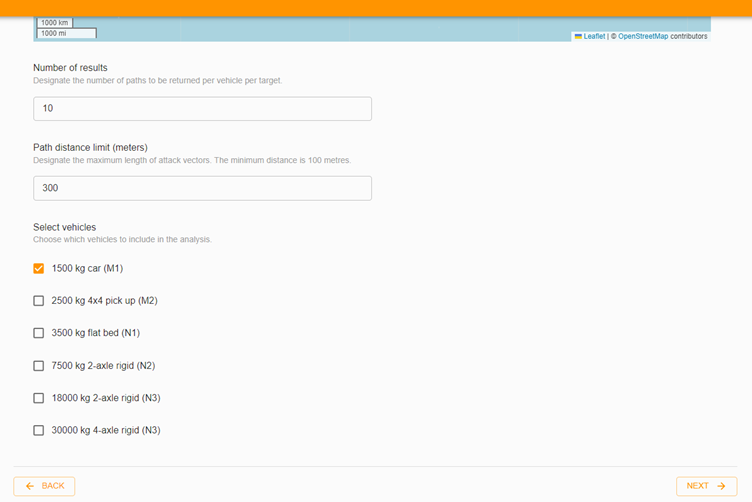Setting up the Path and Vehicle Parameters
After you have set up the AHVVA map, you will then proceed to the section below on path and vehicle parameters.

Path Parameters#
You will need to configure some parameters for the analysis: the number of results to return and the path distance. They will have values already filled in, but you can change or adjust these values as needed.
Number of Results to Return#
For every Auto-Path Marker, AHVVA will identify thousands of possible path permutations. It will then rank these paths using two factors: (1) the directness of the path and (2) the energy at impact. The directness of the path is measured according to the total sum of turn angles in that path. Therefore, a path which has a lot of turns will have a low "directness" score, while a path which is just a straight line will have a very high "directness" score.
If the user specifies 10 paths, AHVVA will return the top 10 paths it has ranked using the above criteria.
note
There is no limit to the number you can specify in this field other than the actual number of paths AHVVA identifies. So, if you set this value as 1000 but AHVVA can only identify 900, only 900 paths will be returned.
Path Distance Limit#
The path distance limit is the maximum allowable length for paths extending from the target point during analysis. It ensures that paths do not exceed this specified distance, thereby defining the range within which analysis occurs.
Choosing a Vehicle#
After setting the path parameters, the next step involves selecting the vehicle, or vehicles, to be used in the analysis. At least one vehicle must be chosen for the assessment.
These vehicle classifications represent classes of PAS 68-compliant vehicles and are categorised according to the weight capacity and structural characteristics. Each classification corresponds to vehicles with different weight capacities, ranging from lighter options to heavier-duty vehicles.
Each option provides information about the weight of the vehicle class, the type of vehicle it represents and its PAS 68 classification.